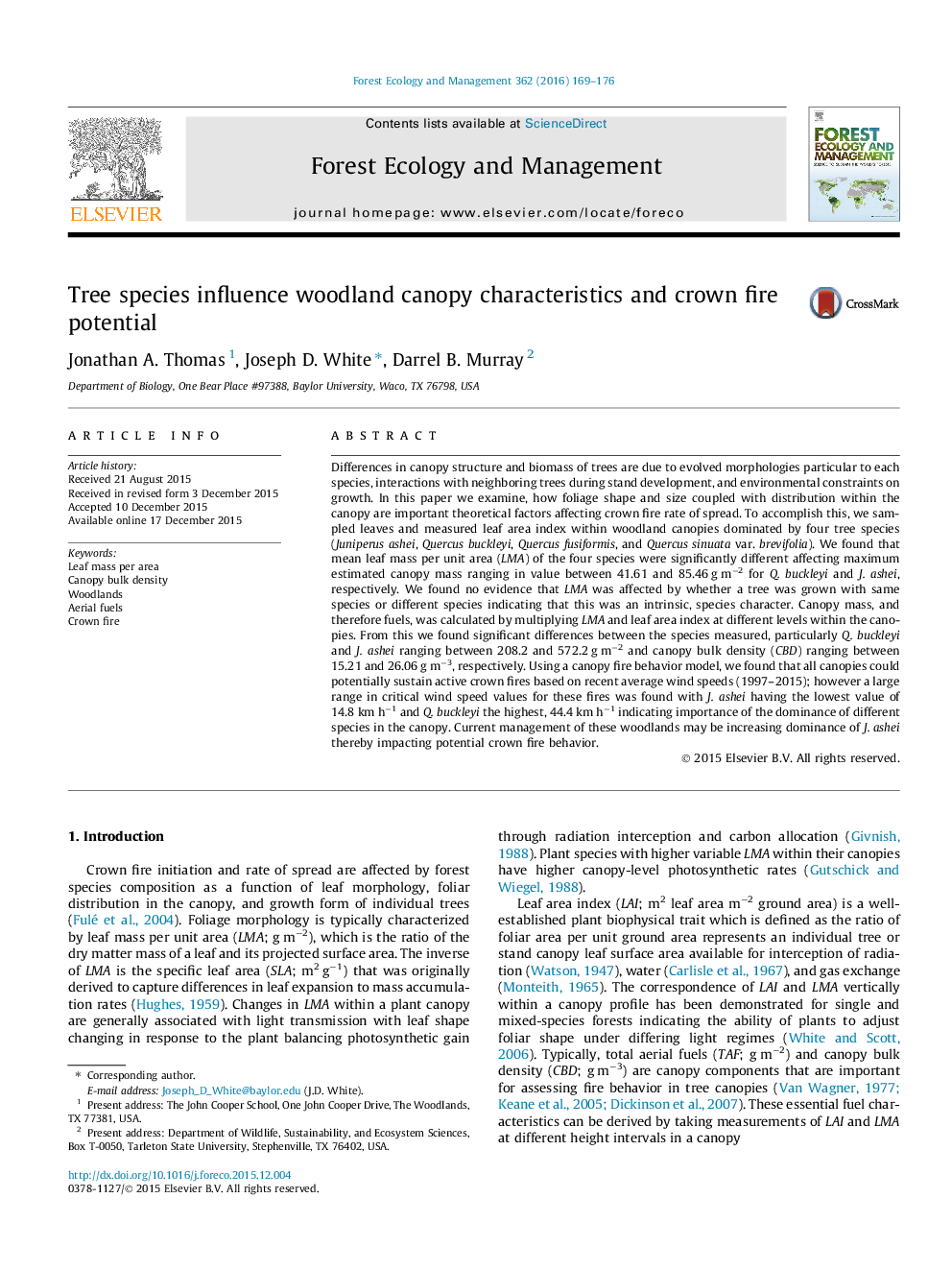| کد مقاله | کد نشریه | سال انتشار | مقاله انگلیسی | نسخه تمام متن |
|---|---|---|---|---|
| 85982 | 159155 | 2016 | 8 صفحه PDF | دانلود رایگان |
• Leaf mass per unit area and canopy bulk density differed in a woodland dependent on tree species.
• Foliar characteristics were not affected within a species by presence or absence of other tree species.
• Foliage distribution in the canopy also differed dependent on dominant species.
• Modeled crown fire showed that species affected fire potential as a function of canopy bulk density.
• Tree species studied showed differences in crown fire potential due to canopy differences.
Differences in canopy structure and biomass of trees are due to evolved morphologies particular to each species, interactions with neighboring trees during stand development, and environmental constraints on growth. In this paper we examine, how foliage shape and size coupled with distribution within the canopy are important theoretical factors affecting crown fire rate of spread. To accomplish this, we sampled leaves and measured leaf area index within woodland canopies dominated by four tree species (Juniperus ashei, Quercus buckleyi, Quercus fusiformis, and Quercus sinuata var. brevifolia). We found that mean leaf mass per unit area (LMA) of the four species were significantly different affecting maximum estimated canopy mass ranging in value between 41.61 and 85.46 g m−2 for Q. buckleyi and J. ashei, respectively. We found no evidence that LMA was affected by whether a tree was grown with same species or different species indicating that this was an intrinsic, species character. Canopy mass, and therefore fuels, was calculated by multiplying LMA and leaf area index at different levels within the canopies. From this we found significant differences between the species measured, particularly Q. buckleyi and J. ashei ranging between 208.2 and 572.2 g m−2 and canopy bulk density (CBD) ranging between 15.21 and 26.06 g m−3, respectively. Using a canopy fire behavior model, we found that all canopies could potentially sustain active crown fires based on recent average wind speeds (1997–2015); however a large range in critical wind speed values for these fires was found with J. ashei having the lowest value of 14.8 km h−1 and Q. buckleyi the highest, 44.4 km h−1 indicating importance of the dominance of different species in the canopy. Current management of these woodlands may be increasing dominance of J. ashei thereby impacting potential crown fire behavior.
Journal: Forest Ecology and Management - Volume 362, 15 February 2016, Pages 169–176
